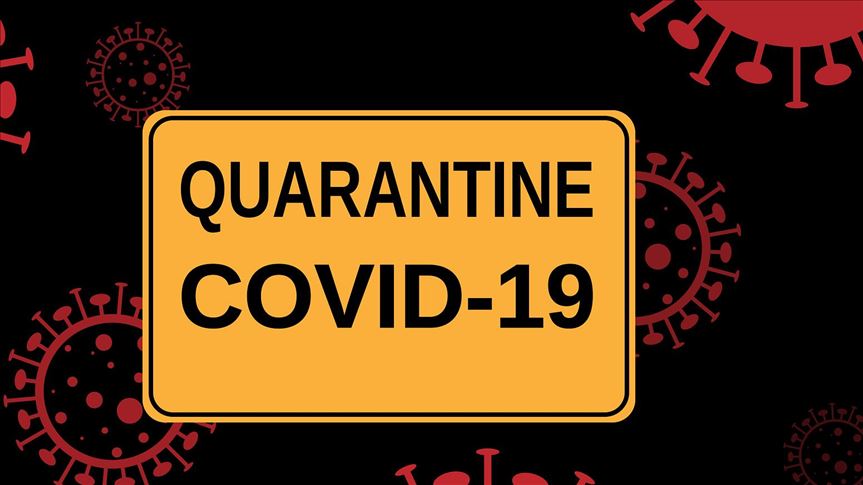Amid the ongoing COVID-19 pandemic, understanding and following the CDC’s quarantine guidelines is crucial. This article provides a concise overview of when and how to isolate, quarantine rules, testing, and mask-wearing recommendations. By adhering to these guidelines, you play a vital role in curbing the virus’s spread and protecting public health.
When to Isolate
The CDC provides clear guidance on when individuals should enter isolation. This includes those who have tested positive for COVID-19, individuals experiencing COVID-19 symptoms, and those who have been in close contact with a confirmed case. Understanding these scenarios is the first step in effectively safeguarding yourself and others.
How to Isolate
If you test positive for COVID-19, stay home for at least 5 days and isolate from others in your home.
You are likely most infectious during these first 5 days.
Properly isolating at home involves practical steps, such as :
- designating a separate living space (if possible),
- wearing masks when in contact with household members,
- frequent handwashing, and avoiding the sharing of personal items.
- These measures help contain the virus and prevent its spread within the household.

Rules to Follow During Quarantine
During your quarantine period, it’s essential to stay home, avoid visitors, and arrange for contactless delivery of essential items. Monitoring symptoms and seeking medical attention if they worsen is also crucial in protecting your health and the health of those around you.
When to End Isolation
The CDC outlines specific criteria for ending isolation, which includes a set number of days since symptoms first appeared or a negative test result, where applicable. These guidelines ensure that individuals are no longer contagious before rejoining their communities.
When to Get Tested Again
Knowing when to seek retesting is essential. This typically applies to those who were symptomatic or in close contact with a confirmed case. Consulting a healthcare provider for guidance on testing is advisable to ensure accurate results.
When to Stop Wearing a Mask
Understanding when it’s appropriate to stop wearing a mask is vital. While mask mandates may vary by location and situation, following the CDC’s guidance on mask-wearing in different settings helps reduce the risk of virus transmission.
In the following sections, we’ll delve deeper into each of these aspects to provide a comprehensive understanding of the CDC’s COVID-19 quarantine guidelines. By following these guidelines diligently, you contribute significantly to the fight against the pandemic, protect your loved ones, and help us all move toward a safer, healthier future.
Additional Tips
In addition to the core guidelines for quarantine, there are several other important measures to consider:
- Vaccination: If you are eligible and have not been vaccinated, strongly consider getting vaccinated. Vaccination is a critical tool in preventing severe illness and reducing the overall spread of the virus.
- Local Health Department Guidelines: Keep yourself informed about local health department guidelines and any specific restrictions or recommendations in your area. These guidelines may change based on the local COVID-19 situation.
- Hand Hygiene and Respiratory Etiquette: Continue practicing good hand hygiene by washing your hands frequently with soap and water for at least 20 seconds. When coughing or sneezing, cover your mouth and nose with a tissue or your elbow to prevent the spread of respiratory droplets.
- Stay Home If Sick: Even if you do not have COVID-19, if you’re feeling unwell with symptoms like fever, cough, or shortness of breath, it’s advisable to stay home to avoid potentially spreading other illnesses.
Conclusion
Understanding and following the CDC’s COVID-19 quarantine guidelines is essential to protecting your health and the health of those around you. By isolating when necessary, following proper procedures, and adhering to testing and mask-wearing recommendations, you contribute to the collective effort to mitigate the impact of the virus.
COVID-19 has challenged communities worldwide, but with informed and responsible actions, we can limit its spread and eventually overcome this pandemic. It’s crucial to stay updated on the latest guidance from the CDC and local health authorities as the situation continues to evolve. Together, we can work towards a safer and healthier future for all.
References
For the most up-to-date information and specific guidance related to COVID-19, please refer to the official resources provided by the Centers for Disease Control and Prevention (CDC):
- CDC COVID-19 Website: The CDC’s official COVID-19 website offers a wealth of information on the virus, including guidance on testing, vaccinations, and prevention measures.
- CDC Quarantine and Isolation Guidelines: This page provides detailed information on quarantine and isolation requirements, including updates and recommendations.
- Local Health Departments: To find specific information and resources for your local area, visit the CDC’s directory of local health departments.
- COVID-19 Vaccination Information: Stay informed about COVID-19 vaccines, their availability, and their effectiveness in preventing illness.
By consulting these authoritative sources, you can ensure that you are following the most current and accurate guidelines to protect yourself and your community during the ongoing COVID-19 pandemic.
In these challenging times, knowledge, and adherence to guidelines are our best tools in the fight against the virus. Together, we can navigate this unprecedented situation and contribute to the safety and well-being of our society.
FAQs About CDC COVID Guidelines for Quarantine 2023
Here are Common Questions About CDC COVID-19 Quarantine Guidelines in 2023
Q: Who should go into quarantine according to the CDC?
A: CDC guidelines state that individuals who have tested positive for COVID-19 and those who have been exposed to the virus should enter quarantine.
Q: How long is the quarantine period for a positive COVID-19 test?
A: The recommended quarantine duration for a positive COVID-19 test is at least 5 days. If, after 5 days, you have been fever-free for 24 hours without fever-reducing medication, and your symptoms are improving or you were asymptomatic, you can conclude your isolation. However, continue wearing a mask around others for an additional 5 days.
Q: How long should I quarantine if I’ve been exposed to COVID-19?
A: In case of exposure to COVID-19, the CDC advises wearing a high-quality mask for 10 days and getting tested on day 5. If the test comes back negative, you can end your quarantine. If it’s positive, you should isolate for a minimum of 5 days.
Q: Do fully vaccinated individuals need to quarantine after exposure?
A: Fully vaccinated individuals do not need to quarantine post-exposure. However, they should wear a mask for 10 days.
Q: What actions should I take during quarantine?
A: While in quarantine, it’s crucial to remain at home and avoid contact with others. Regularly monitor your symptoms and undergo testing if any symptoms emerge.
Q: What are the typical symptoms of COVID-19?
A: Common COVID-19 symptoms include fever, cough, shortness of breath, fatigue, muscle aches, headache, sore throat, congestion, runny nose, nausea, vomiting, and diarrhea.
Q: Can I transmit COVID-19 even if I am asymptomatic?
A: Yes, it is possible to transmit COVID-19 even if you are not displaying symptoms. Therefore, quarantine and mask-wearing are essential after exposure.
Q: What should individuals with compromised immune systems or underlying medical conditions do?
A: If you have a compromised immune system or underlying medical conditions, consult your healthcare provider regarding the need for a longer quarantine period exceeding 5 days.
Q: Where can I find further information regarding CDC COVID-19 quarantine guidelines?
A: To access more details about CDC COVID-19 quarantine guidelines, please visit the CDC website or consult with your healthcare provider.
Q: What are the recent modifications to CDC COVID-19 Quarantine Guidelines in 2023?
A: The CDC has introduced updates to its COVID-19 quarantine guidelines for 2023. These revised guidelines are briefer and less restrictive compared to the previous version. The changes reflect the CDC’s findings that the majority of COVID-19 transmission occurs early in the illness.
Under these new guidelines, individuals who test positive for COVID-19 are now required to quarantine for only 5 days instead of the previous 10-day recommendation. Furthermore, individuals exposed to COVID-19 do not need to quarantine if they are fully vaccinated, but they should continue wearing a mask for 10 days as a precaution.
